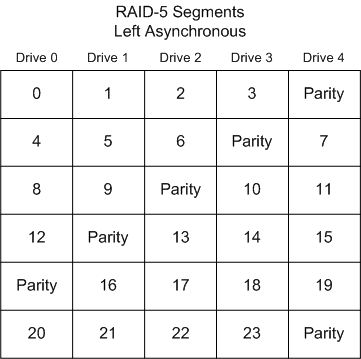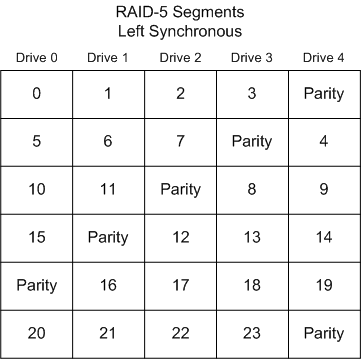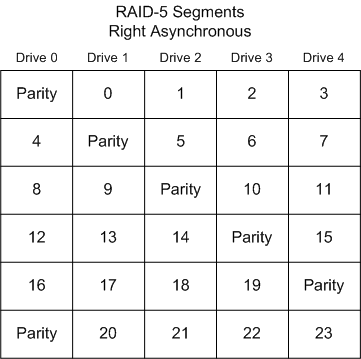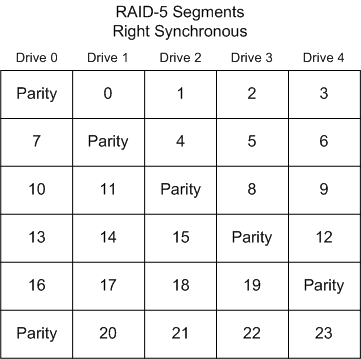

RAID Information - Linux RAID-5 Algorithms
![]()
 |
|
 |
|
RAID Information - Linux RAID-5 Algorithms
This
page provides information on the layout of the segments in the various
RAID-5 structures in Linux.
|
|
Software RAID-5 under the LINUX operating system can use one of four algorithms for the placement of segments among the disks in the array. These will be individually shown below:
In this layout, the segments are numbered sequentially, starting with the first non-parity drive in the stripe. The parity drive starts at the left-most drive, and moves right one drive per stripe. This is the 'standard' RAID-5 layout. It is not the default for Linux.

In this layout, the segments are numbered sequentially, starting with the first drive in the stripe after the parity. The segments wrap. The parity drive starts at the left-most drive, and moves right one drive per stripe. This is the default RAID-5 segment layout under Linux.
For large reads, this segment layout is the fastest. This is because each consecutive group of segments that is no larger than the total number of disks in the array, will use all the disks in the array.

In this layout, the segments are numbered sequentially, starting with the first non-parity drive in the stripe. The parity drive starts at the right-most drive, and moves left one drive per stripe.

In this layout, the segments are numbered sequentially, starting with the first drive in the stripe after the parity. The segments wrap. The parity drive starts at the right-most drive, and moves left one drive per stripe.

If you have any comments or suggestions, please E-mail webmaster@accs.com